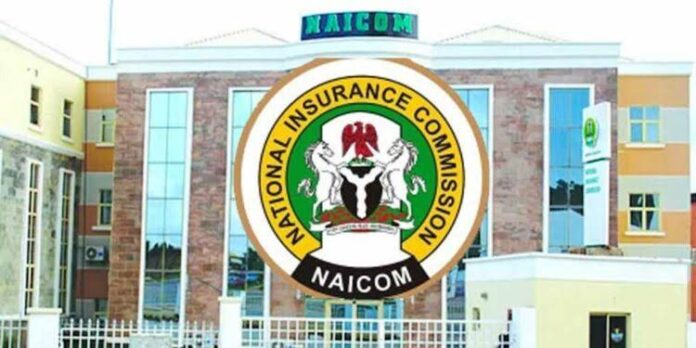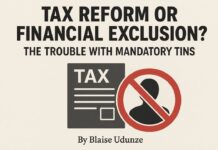Nigeria’s insurance sector is undergoing a historic transformation under the NIIRA 2025 recapitalisation directive, which compels firms to strengthen their capital base for greater solvency, investor confidence, and policyholder protection. In this in-depth analysis, SEGUN AGBOLAWO examines the reforms, challenges, investor response, and emerging winners reshaping Nigeria’s insurance landscape.
Nigeria’s insurance industry stands at a defining moment as operators scramble to meet the new capital thresholds introduced under the Nigerian Insurance Industry Reform Act (NIIRA) 2025. The recapitalisation directive, issued by the National Insurance Commission (NAICOM), represents one of the most ambitious reform initiatives in the history of the nation’s financial services sector. Its goal is to enhance solvency, protect policyholders, and strengthen public confidence in an industry long plagued by weak balance sheets, poor claims settlement capacity, and limited market penetration.
The NIIRA 2025 requires insurance firms to increase their minimum capital to levels that reflect their business segments and risk exposure. Life insurers must now hold at least ₦10 billion, up from ₦2 billion; non-life insurers must meet ₦15 billion, compared to the previous ₦3 billion; reinsurers must shore up to ₦35 billion from ₦10 billion; and composite insurers, operating in both life and general segments, are now mandated to maintain a minimum of ₦35 billion, a sharp rise from ₦5 billion. Beyond this, every insurer must maintain a minimum capital adequacy ratio of 100%, in line with international solvency benchmarks.
While the Commission is still finalising details on what constitutes admissible capital — defined by the Act as the excess of admissible assets over liabilities, excluding own shares and other specified instruments — the reform has already begun reshaping boardroom conversations and investment strategies across the industry. It is not merely a financial test but a governance and operational transformation expected to separate well-managed, adequately capitalised firms from the rest.
Composite Insurers Lead the Pack
Among composite insurers, the early data shows a mixed picture. AIICO Insurance Plc tops the list with a shareholders’ fund of ₦76.38 billion, positioning it comfortably above the ₦35 billion threshold. The company’s strategic diversification and strong investment income have given it a firm footing ahead of regulatory scrutiny. Cornerstone Insurance Plc follows closely with ₦67.09 billion, buoyed by its aggressive asset revaluation and steady premium growth. Mutual Benefits Assurance Plc, another strong performer, reported ₦61.14 billion in shareholders’ funds, while AXA Mansard Insurance Plc recorded ₦56.99 billion. These firms appear well-prepared for the new regime, having either executed capital injections in previous recapitalisation cycles or maintained robust retained earnings.
Consolidated Hallmark Insurance Plc, with ₦35.87 billion, also meets the new requirement, though with less buffer to absorb shocks from potential market volatility. LASACO Assurance Plc, at ₦22.11 billion, falls short and may require capital raising, either through a rights issue or private placement, to meet the threshold. Fortis Global Insurance, however, faces a more daunting challenge with a negative shareholders’ fund of ₦3.96 billion. Its situation suggests deep operational losses and capital erosion that could necessitate major restructuring, fresh equity injection, or acquisition to stay afloat.
The composite insurance space, dominated by these players, is expected to see a wave of mergers, acquisitions, and equity consolidation as weaker firms seek rescue options. Analysts project that some mid-tier insurers could merge to meet the ₦35 billion mark rather than embark on solo capital raising, given the tight liquidity conditions in the market and investors’ cautious sentiment.
Non-Life Insurers Show Resilience
The general or non-life insurance segment presents a relatively stronger capital position, though not without outliers. NEM Insurance Plc leads the category with ₦75.93 billion in shareholders’ funds, underscoring its consistent profitability and prudent risk management. Linkage Assurance Plc follows with ₦44.69 billion, while Coronation Insurance Plc reported ₦39.53 billion. Prestige Assurance Plc, with ₦19.9 billion, also exceeds the ₦15 billion requirement, positioning these firms favourably for regulatory compliance.
However, several firms remain in precarious territory. Guinea Insurance Plc, with ₦1.02 billion, is substantially undercapitalised and will likely face regulatory action if immediate capital restructuring is not undertaken. STACO Insurance Plc and International Energy Insurance Plc both have negative shareholders’ funds of ₦6.58 billion and ₦7.02 billion, respectively — a reflection of sustained operational losses, accumulated liabilities, and weak governance structures. For these firms, recapitalisation is not just a compliance exercise but an existential challenge. Unless they secure investors or enter merger agreements soon, they may be among the first casualties of NAICOM’s enforcement wave.
The implication of undercapitalised firms extends beyond regulatory penalties. It affects public trust and the ability to underwrite large-ticket risks in sectors such as oil and gas, aviation, and infrastructure. Without sufficient capital, insurers are forced to rely excessively on reinsurance treaties, which erode profitability and limit local capacity retention. In the long term, this undermines Nigeria’s aspiration to keep more premium income within its borders and reduce capital flight through offshore reinsurance.
Life Insurers Maintain Moderate Stability
The life insurance segment shows relatively balanced capital strength among listed players. Veritas Kapital Assurance Plc, with ₦16.81 billion in shareholders’ funds, leads the category, followed closely by Universal Insurance Plc at ₦16.41 billion. Sovereign Trust Insurance Plc reported ₦15.88 billion, while Regency Alliance Insurance Plc and SUNU Assurances Nigeria Plc posted ₦14.04 billion and ₦13.99 billion, respectively. All five companies have surpassed the ₦10 billion minimum requirement, suggesting that the life segment may face fewer disruptions than other categories once the recapitalisation deadline takes full effect.
However, analysts caution that meeting the capital threshold does not necessarily guarantee financial soundness. The real test lies in capital quality, liquidity profile, and the sustainability of earnings. For instance, a company may meet the threshold through asset revaluation or temporary injections, yet struggle with cash flow or claims obligations. This is why NAICOM’s emphasis on admissible assets — rather than mere book value — is expected to filter out weak balance sheets disguised by creative accounting.
Industry-wide Implications
Recapitalisation is not new to Nigeria’s financial landscape. The banking sector underwent similar reforms in 2005, which reduced the number of commercial banks from 89 to 25 and led to the emergence of stronger, more resilient institutions. NAICOM appears poised to replicate this success by fostering an insurance industry that can withstand macroeconomic shocks, settle claims promptly, and attract foreign direct investment.
The insurance sector, which currently contributes less than 1% to Nigeria’s Gross Domestic Product, has struggled for years with low public confidence, inadequate regulation enforcement, and poor capital adequacy. Many firms operate with capital far below the risk exposure levels required to sustain modern underwriting. Consequently, premium income has often failed to translate into meaningful profitability or improved claims experience. The recapitalisation drive, therefore, aims to correct structural weaknesses by aligning operators’ financial capacity with their underwriting risks.
If implemented effectively, analysts believe the exercise could trigger a new era of consolidation and market redefinition. The stronger firms would expand their portfolios through acquisitions, while underperforming firms may voluntarily exit or merge to stay compliant. This natural selection could reduce the number of licensed insurers, but it would also improve efficiency, enhance claims-paying capacity, and encourage innovation.
Challenges and Concerns
Despite the reform’s clear intent, challenges abound. One key concern is the short implementation timeline — just twelve months — which may not be sufficient for smaller firms to raise the required funds, especially in a tight economic environment marked by high interest rates and limited investor appetite. Additionally, uncertainty about what qualifies as admissible capital has delayed some firms from finalising their recapitalisation strategies.
Another challenge lies in market liquidity. With equities struggling to sustain momentum after recent rallies, insurers seeking fresh equity capital may find it difficult to attract investors. The sector’s historical underperformance and low dividend yields have not inspired confidence, meaning that rights issues and private placements could face sluggish uptake unless firms present compelling business cases.
There are also fears that forced mergers may create integration challenges. Corporate cultures, management philosophies, and legacy liabilities could complicate post-merger harmonisation, leading to short-term inefficiencies. Analysts warn that while consolidation may strengthen balance sheets, it must be handled prudently to avoid operational disruptions.
Furthermore, regulatory capacity will be tested. NAICOM must balance enforcement with support, ensuring that compliance does not result in mass job losses or sudden market exits that could destabilise the industry. The Commission’s credibility will depend on transparent criteria, consistent communication, and fair treatment across all categories of operators.
Investor Sentiment and Market Reaction
So far, investor response to the recapitalisation drive has been mixed. Some see it as an opportunity to invest in undervalued insurance stocks before consolidation boosts their market value, while others remain wary of uncertainty around timelines and modalities. As of October 21, 2025, the insurance index recorded a year-to-date return of 78.35%, reflecting renewed buying interest driven by speculation and portfolio rebalancing.
Analysts at several investment firms predict that once NAICOM clarifies admissible capital components and issues a definitive compliance timetable, the market could witness a fresh wave of rights issues and strategic equity placements. A few insurers have already hinted at ongoing discussions with institutional investors, both local and foreign, to shore up their balance sheets.
Interestingly, the recapitalisation agenda could also spur innovation. Firms with adequate capital may diversify into new product lines such as agricultural insurance, health microinsurance, and climate-risk coverage — segments currently underdeveloped in Nigeria. In the medium term, better capitalisation will enhance underwriting capacity, reduce reliance on reinsurance, and position the sector to support infrastructure financing, just as banks did after the 2005 consolidation.
The Road Ahead
As the 2025–2026 recapitalisation timeline unfolds, the insurance industry faces both opportunity and peril. The winners will be those that act early — firms that restructure governance, improve risk management, and raise quality capital. For laggards, the window is narrowing fast. Failure to comply will mean licence revocation, forced mergers, or acquisition by stronger rivals.
NAICOM, on its part, must strike a delicate balance between reform zeal and regulatory pragmatism. The Commission has a duty to ensure that the process enhances confidence, not chaos. Its success will hinge on effective communication, transparent evaluation, and continuous stakeholder engagement.
Ultimately, the insurance recapitalisation drive is not merely about meeting numerical thresholds. It is about transforming a sector long perceived as weak into a pillar of Nigeria’s financial ecosystem. The new capital regime seeks to align the industry with global solvency standards, ensuring that insurers can meet obligations, finance innovation, and support economic growth.
For the average policyholder, this reform promises improved claims experience and stronger protection. For investors, it signals the emergence of a more credible industry with sustainable returns. For the economy, it marks a shift toward financial depth, where insurance can play its rightful role in mobilising long-term funds for national development.
The coming months will reveal which firms can adapt, evolve, and thrive under the new dispensation. What is certain, however, is that the NIIRA 2025 recapitalisation programme will redefine Nigeria’s insurance landscape for decades to come — ushering in a leaner, stronger, and more competitive industry capable of fulfilling its promise to both investors and policyholders














